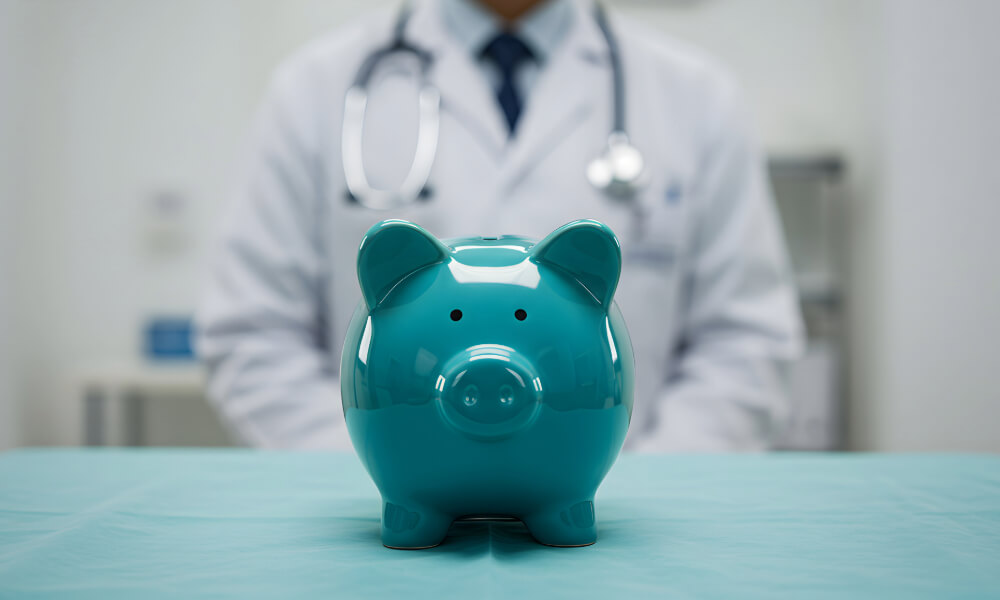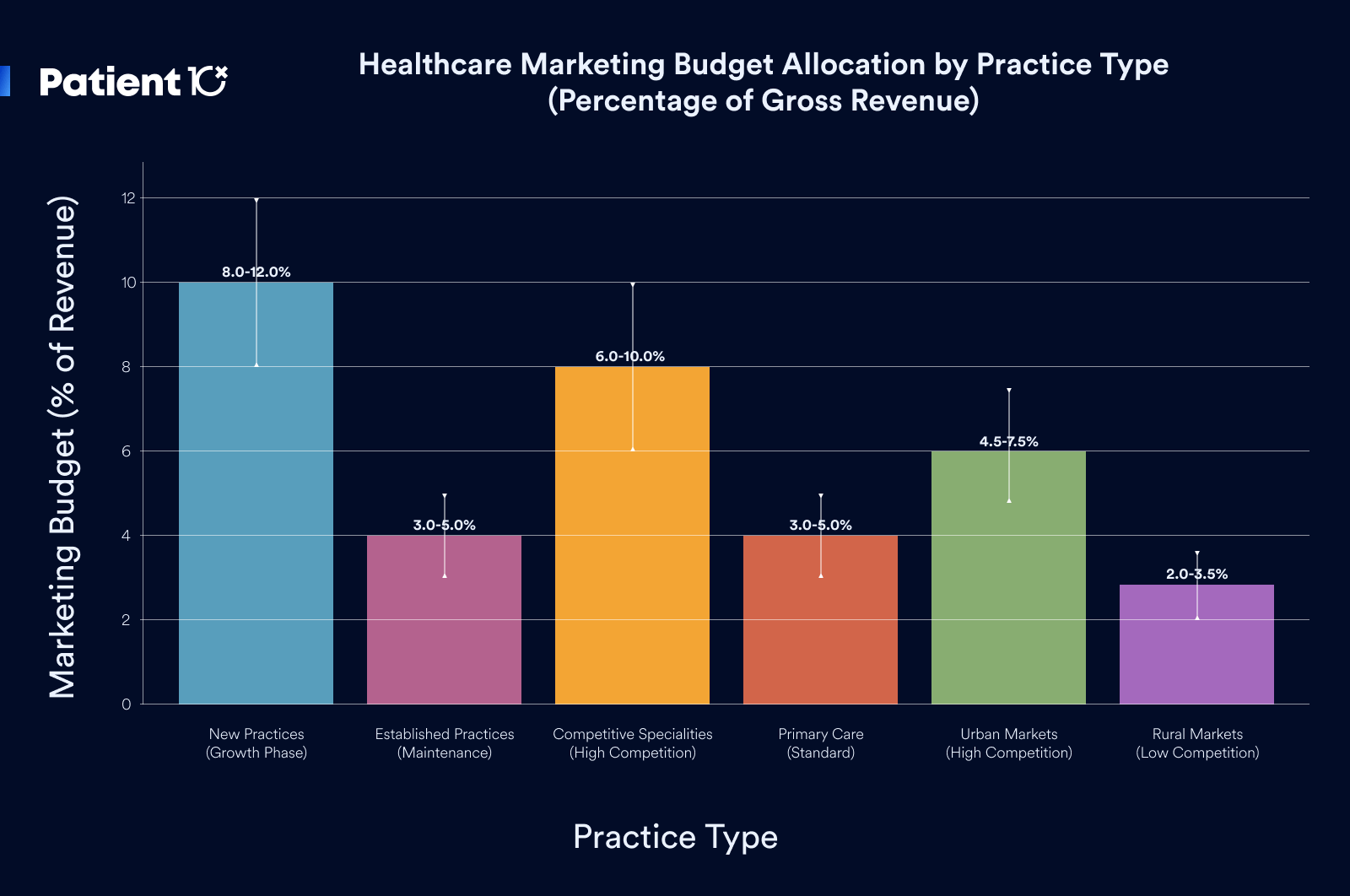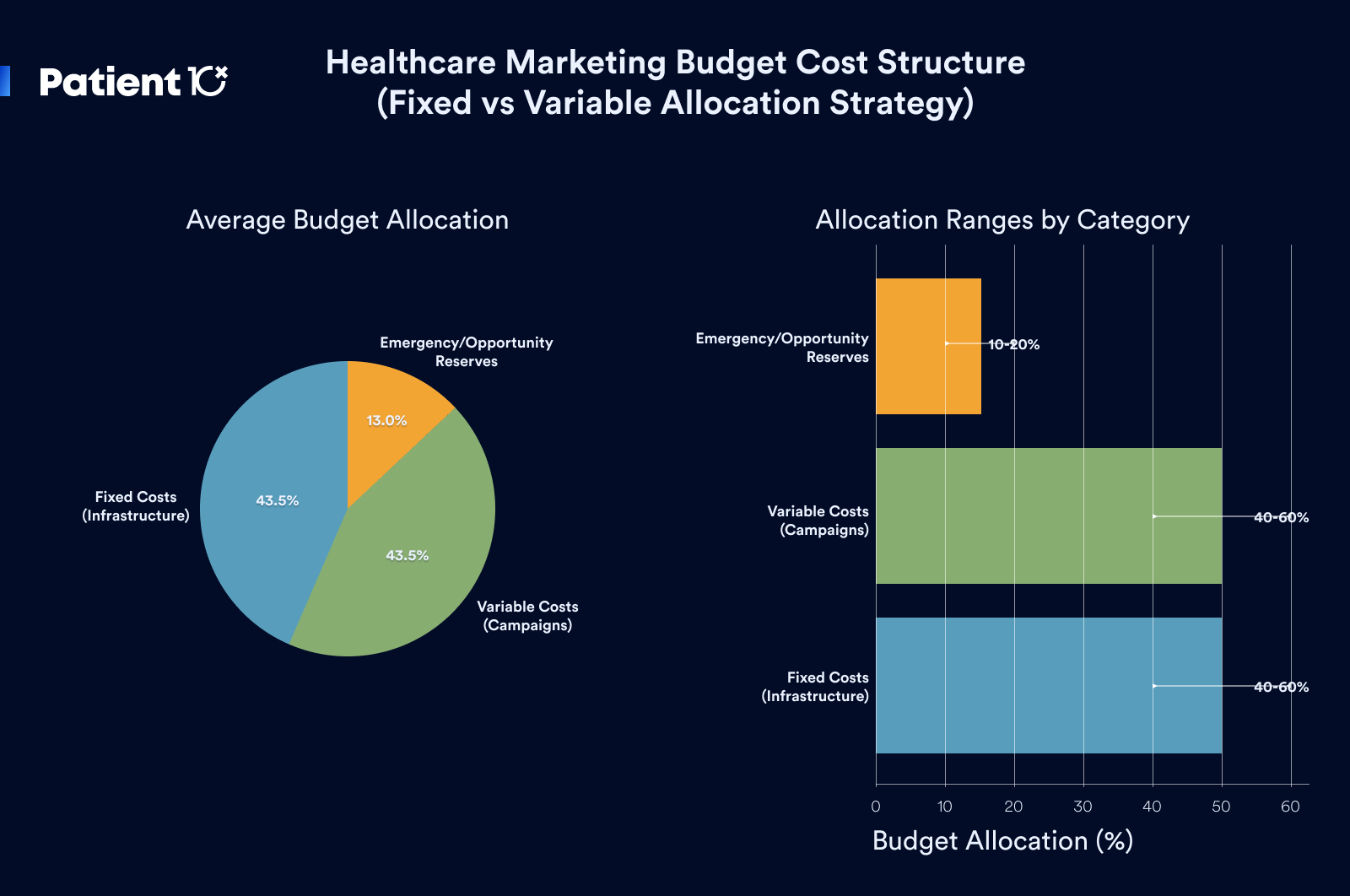Complete healthcare marketing budget guide for medical practices. Budget allocation strategies, cost planning frameworks, ROI expectations, and investment priorities for sustainable practice growth in 2025.

Healthcare marketing budget planning represents one of the most critical yet challenging aspects of practice management, with most medical practices either under-investing in marketing or allocating resources ineffectively across channels and strategies. The complexity of healthcare marketing, extended patient decision-making cycles, and diverse service offerings create unique budgeting challenges that require specialized approaches and strategic thinking.
The healthcare marketing investment landscape demands comprehensive budget planning that balances immediate patient acquisition needs with long-term strategic development while maintaining regulatory compliance and operational efficiency. Practices that implement strategic budget allocation typically achieve 40-70% better marketing ROI compared to those that approach marketing spending reactively or without comprehensive planning.
Understanding healthcare marketing budget requirements and allocation strategies enables medical practices to develop sustainable marketing investments that support practice growth while maximizing return on marketing expenditures. This comprehensive guide provides practical frameworks for healthcare marketing budget development that address the unique needs and challenges of medical practice marketing.
Industry Benchmarks and Investment Levels
Healthcare practices typically invest 3-8% of gross revenue in marketing activities, with new practices often requiring 8-12% during initial growth phases, while established practices may maintain effectiveness with 3-5% investment levels. Budget allocation should reflect practice growth stage, competitive intensity, and strategic objectives rather than arbitrary percentage targets.
Specialty-specific budget requirements vary significantly, with competitive specialties like plastic surgery or dermatology often requiring 6-10% of revenue for effective marketing, while primary care practices may achieve results with a 3-5% investment. Specialty considerations should influence budget planning while accounting for patient acquisition costs and lifetime value differences.
Geographic market factors significantly affect marketing budget requirements, with competitive urban markets often requiring 50-100% higher investment compared to rural or less competitive areas. Market analysis should inform budget planning while considering local competition and patient acquisition opportunities.

Revenue-Based vs. Growth-Based Budgeting
Revenue-based budgeting provides stable marketing investment that scales with practice performance while ensuring sustainable marketing spending relative to practice income. Revenue-based approaches typically work best for established practices with predictable patient flow and stable competitive positioning.
Growth-based budgeting allocates marketing investment based on expansion goals and patient acquisition targets rather than historical revenue, often requiring higher initial investment that generates compound returns through practice growth. Growth-based approaches typically work best for new practices or those pursuing aggressive expansion strategies.
Hybrid budgeting approaches combine revenue-based stability with growth-based opportunity investment, providing balanced strategies that maintain operational stability while supporting strategic development. Hybrid approaches often generate optimal results through balanced risk management and growth investment.
Fixed vs. Variable Cost Planning
Fixed marketing costs including website maintenance, platform licensing, and staff salaries typically represent 40-60% of healthcare marketing budgets while providing essential infrastructure and capabilities. Fixed cost planning ensures consistent marketing capabilities while supporting long-term strategic development.
Variable marketing costs, including advertising spend, campaign development, and promotional activities, typically represent 40-60% of budgets while providing flexibility for optimization and opportunity response. Variable cost management enables tactical adjustment while maintaining strategic consistency.
Emergency and opportunity reserves of 10-20% of marketing budgets enable response to competitive threats or market opportunities while providing flexibility for strategic adjustment. Reserve planning prevents missed opportunities while maintaining budget discipline and strategic focus.

Digital Marketing Investment Allocation
Website development and optimization typically require 15-25% of annual marketing budgets for comprehensive implementation and ongoing improvement. Website investment provides a foundation for all other marketing activities while generating long-term value through improved conversion and patient experience.
Search engine optimization typically requires 20-30% of marketing budgets for effective implementation and ongoing management, with higher percentages often justified by long-term value and compound returns. SEO investment typically generates 3-5x ROI over 12-24 months through sustained organic traffic growth.
Paid advertising, including Google Ads and social media, typically requires 25-40% of marketing budgets for meaningful market impact and patient acquisition. Paid advertising provides immediate results while requiring ongoing optimization and management for sustained effectiveness.

Traditional Marketing and Offline Channels
Print advertising and direct mail typically require 10-20% of marketing budgets for effective local market penetration and brand building. Traditional marketing often provides valuable brand awareness while supporting digital marketing effectiveness through integrated approaches.
Professional networking and referral development typically require 5-15% of marketing budgets for relationship building and referral source cultivation. Referral marketing often generates the highest-quality patients while requiring sustained relationship investment and professional engagement.
Community engagement and sponsorship activities typically require 5-10% of marketing budgets for local market positioning and brand building. Community investment often provides long-term value through reputation-building and local market relationships.
Technology and Infrastructure Investment
Marketing technology platforms, including CRM, automation, and analytics, typically require 10-20% of marketing budgets for comprehensive implementation and ongoing licensing. Technology investment provides operational efficiency while supporting strategic marketing capabilities and performance measurement.
Content creation and management typically requires 10-15% of marketing budgets for ongoing development of educational materials, case studies, and patient communication resources. Content investment supports all marketing channels while building long-term authority and patient trust.
Professional services, including strategy development, campaign management, and optimization, typically require 15-25% of marketing budgets for specialized expertise and ongoing support. Professional services often improve overall marketing effectiveness by 40-60% while reducing internal management burden.